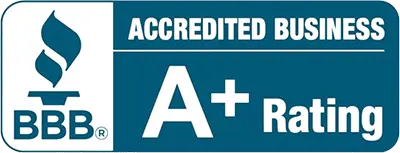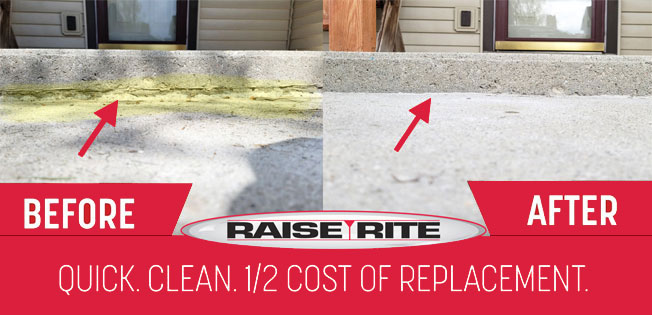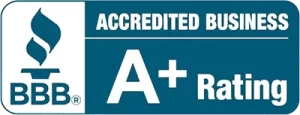Your Questions Answered
How It Works
How do you fix sinking concrete?
We fix sinking concrete by drilling small holes in the slab and injecting polyurethane foam underneath. The foam expands, fills empty spaces, and lifts the slab back to its original position. It sets in minutes and creates a strong, stable base that helps prevent future sinking. Concrete leveling is a clean, fast process that works for driveways, sidewalks, patios, garage floors, and more — without the mess or cost of full replacement.
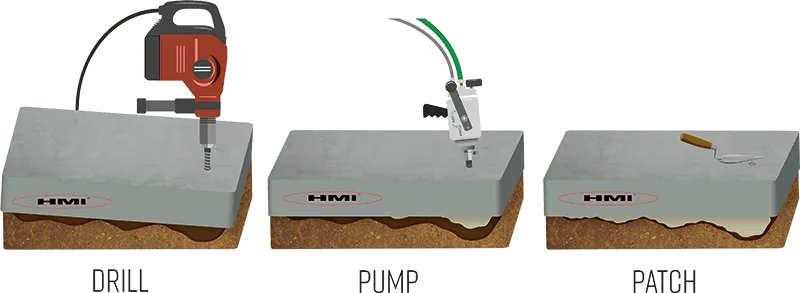
Why does concrete sink in the first place?
Concrete sinks when the soil underneath it shifts, settles, or washes away. This can happen due to freeze–thaw cycles, poor drainage, heavy rain, or soft, uncompacted soil. In some cases, rodents like chipmunks create tunnels that lead to empty spaces under the slab. These conditions are especially common in Illinois and around the Chicago suburbs, where we often see sinking driveways, sidewalks, patios, and steps as a result.
What kind of material do you use to raise concrete?
Polyurethane foam is used for raising concrete by injecting it as a liquid that hardens into a solid foam. This foam will NEVER lose density or shrink. Poly foam is also lighter than the materials used for traditional mudjacking and needs fewer holes to be installed. Plus, the holes are smaller, making the repair practically invisible! Our foam is safe for your home, your family, and the environment. The polyurethane foam we use is made by our sister company, HMI, and contains over 40% recycled and renewable materials. It’s a USDA Certified Biobased Product, meaning it meets strict standards for sustainability and environmental responsibility.
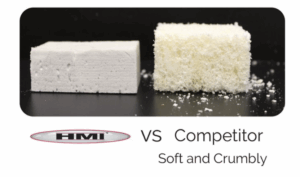
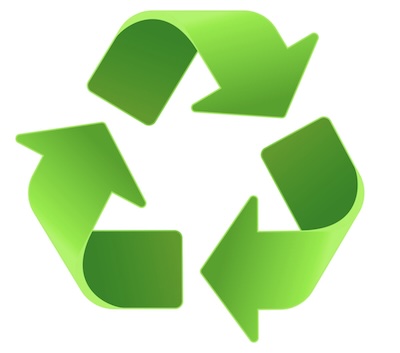 HMI foam is formulated using renewable, non-toxic components that won’t leach into soil or groundwater. It’s clean, long–lasting, and designed to perform without adding weight to already weak soil. By lifting instead of replacing, you also keep unnecessary concrete waste out of landfills — which helps reduce your environmental impact.
HMI foam is formulated using renewable, non-toxic components that won’t leach into soil or groundwater. It’s clean, long–lasting, and designed to perform without adding weight to already weak soil. By lifting instead of replacing, you also keep unnecessary concrete waste out of landfills — which helps reduce your environmental impact.
We’re proud to offer a solution that’s fast, effective, and better for the planet — without compromising on quality or results.
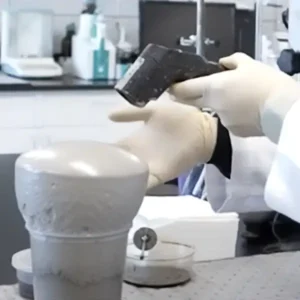
What is the difference between Mudjacking and Polyurethane Concrete Raising?
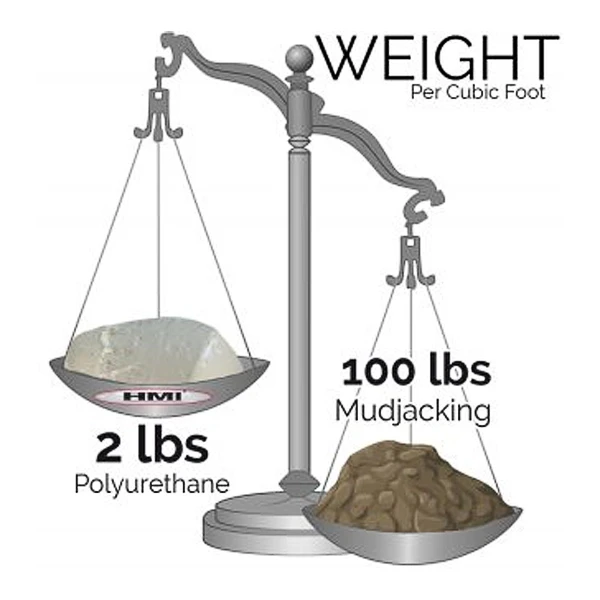 Both methods of concrete lifting will fix your sunken concrete. The difference lies in the process and materials used. Mudjacking and polyurethane concrete raising (also called polyjacking) raise and support sunken or unstable concrete by drilling holes and pumping material under the slab.
Both methods of concrete lifting will fix your sunken concrete. The difference lies in the process and materials used. Mudjacking and polyurethane concrete raising (also called polyjacking) raise and support sunken or unstable concrete by drilling holes and pumping material under the slab.
We train the experts in both types of concrete lifting, so let’s go over how each process works:
Material
Mudjacking uses a sand based material that is infused with Portland cement. This slurry is hydraulically pumped under the slab to fill voids and raise the concrete. Mudjacking material weighs on average 100 lbs per cubic foot and is the considered the traditional method for repairing concrete.
Polyurethane, on the other hand, has become a popular repair method because the material is so lightweight compared to traditional mudjacking material, it will not further burden the already weak soil. Polyurethane concrete raising uses a foam material that is injected under the slab. The foam then expands and fills any voids beneath the slab to safely and effectively raise the concrete. Polyurethane foam will never lose density, is permanent and weighs only about 2 lbs. per cubic foot – making it a popular choice.
Hole Size
After the slab has been raised, the only visible evidence that the concrete has been repaired are the holes. Mudjacking drills 1 ⅝″ holes to raise the sunken concrete.
Polyurethane has gained huge popularity because it only requires drilling 5/8″ holes, making them nearly invisible on your concrete.
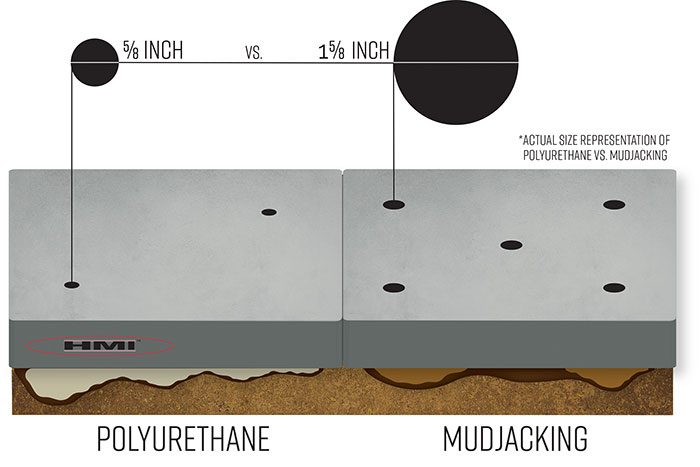
Investment / Cost
Concrete raising is typically half the cost of replacing your concrete slab. While polyurethane material is more expensive than mudjacking material, the smaller hole size, lighter material weight, and fewer injection holes, make the investment in polyurethane over mudjacking well worth it.
Raise-Right has saved customers over $20 million choosing concrete lifting over replacement!
What We Can Lift
What concrete can be raised/repaired?
Solid slabs of concrete can be raised and stabilized. Gravel areas, blacktop or pavers are unable to be repaired, and need to be replaced or re-installed to remedy settling issues. Slabs of concrete that are badly cracked may also be too damaged to lift.
We LIFT IT ALL! Sidewalks, Driveways, Pool Decks, Footings, Patios, Garage Floors, Basement Floors, Office Floors, Warehouse Floors, Highways, Bridge Approaches, and More. Residential, Commercial, Municipal.
If you are not sure if your concrete can be raised, call us for a free estimate!
Raising settled concrete can be half the cost of replacing it with less damage to your landscaping and downtime. Our expert estimators will be able to assess and provide you with an accurate, FREE estimate for your project.
Can you lift stamped or decorative concrete without damaging it?
Yes! We lift stamped and decorative concrete all the time. We know homeowners worry about drilling into a finished surface, and how the end result will look- so we take extra care to protect the look of your concrete. The holes we drill are tiny (usually about ⅜” – ⅝”), and we place them carefully to avoid disrupting patterns or designs.
After the lift, we patch the holes and match the color as closely as possible. Most customers are surprised how natural the result looks. You keep your original decorative concrete — just level, stable, and ready to use again.
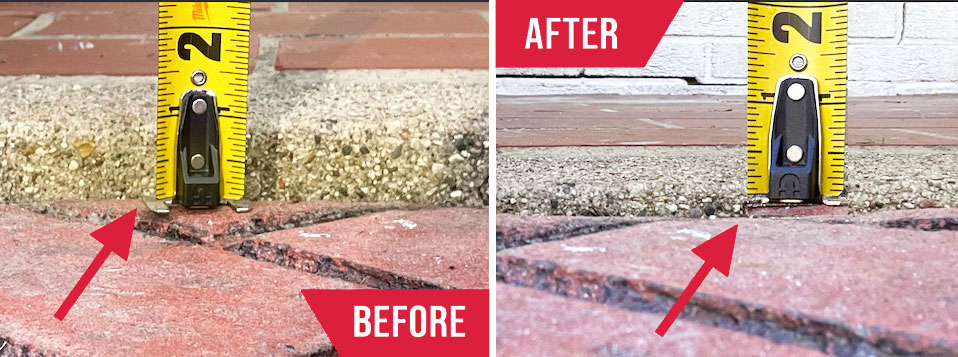
Can you lift concrete inside a home or building?
Yes — we can lift and stabilize interior concrete just like we do outside. That includes basement floors, garage slabs, warehouses, retail spaces, and other indoor areas. Our polyurethane foam is clean, fast-curing, and safe for indoor use. It doesn’t create any harsh odors or messy cleanup.
In addition to lifting, we can stabilize concrete that hasn’t sunk yet but is shifting or sitting on weak soil. We take extra care to protect walls, doorways, and finished surfaces, and most jobs are done in just a few hours. If you have uneven or unstable floors inside your home or building, we can fix them with minimal disruption.
What happens if there’s a big empty space under my slab?
If there’s a large void under your concrete, we can fill it using expanding polyurethane foam. The foam flows into the empty space, expands, and hardens to create a strong, stable base under the slab. This process — called void filling — prevents further sinking, cracking, or movement, and is a form of concrete stabilization.
We use different types of foam for different slabjacking situations, which is something most companies can’t offer. Whether you need to stabilize a sunken patio or support the floor of a factory, we have the right material and experience for the job. We’ve seen it all — from small residential repairs to large commercial and industrial projects.
If you’re dealing with soft spots, hollow sounds, or visible gaps under your concrete, our team can assess the issue and give you a solution that’s fast, long-lasting, and made to fit your exact needs.
Cost, Estimates, and Warranty
How much does concrete raising cost?
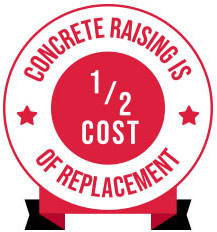
Concrete raising is about half the cost of replacing the same concrete. The price of raising or stabilizing your concrete depends on how much leveling material is needed for the job.
Usually concrete raising costs between $2 and $5 per square foot. So if you have a 10 ft. x 10 ft. section (100 square feet) that needs to be raised, you’re looking at a cost between $200 and $500. The exact price will depend on factors like how much the slab has settled, whether there are voids underneath, or if other sections of the concrete are part of the repair.
This is why we offer FREE estimates! One of our experienced crew members can come to your home or business, and provide you with an accurate estimate for your concrete raising project.
Is concrete lifting better than replacing it?
Yes — concrete lifting is almost always a better option than replacing. It’s faster, cleaner, and often up to half the cost of tearing out and pouring new concrete. Most jobs take just a few hours, and the slab is ready to use right away. There’s no demolition, no mess, and no damage to your landscaping or driveway.
Replacement can take days, costs more in labor and materials, and creates extra waste. We’ve saved our customers over $20 million by lifting concrete instead of replacing it — and those savings keep growing.
Lifting is also a more sustainable choice. Our foam contains 40% renewable content, and reusing your existing slab keeps concrete out of landfills. It’s a smart solution that works for driveways, sidewalks, patios, garage floors, and more.
If your concrete is solid but sinking, lifting is usually the best way to fix it — with less mess, less downtime, and less cost.
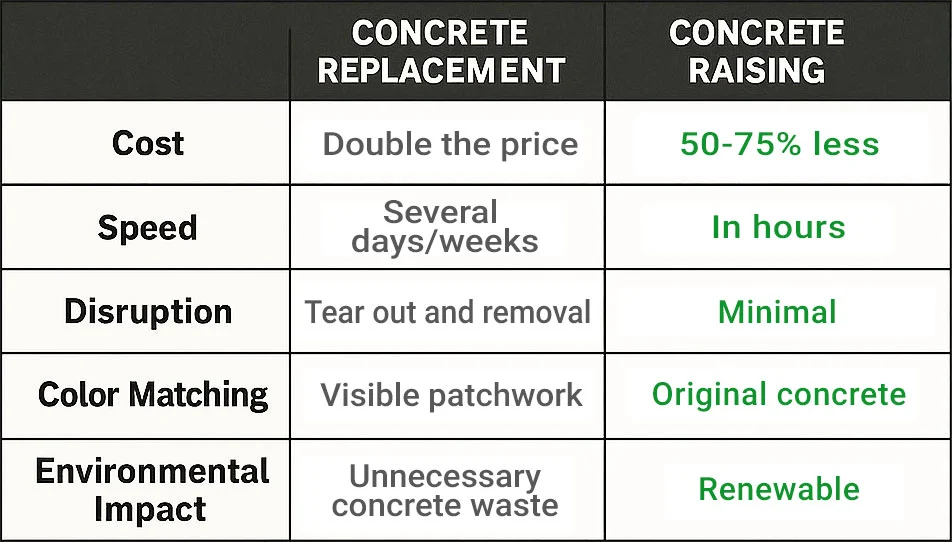
How long does your warranty last, and what’s included?
We offer a 5-year warranty on all concrete lifting — and that’s not just a number, it’s a promise. Many companies talk about standing behind their work, but we’ve been doing it for over 50 years. We’re a second-generation, family-owned company, and today, three generations work in the business. When we say we’ll be here if you need us — we mean it.
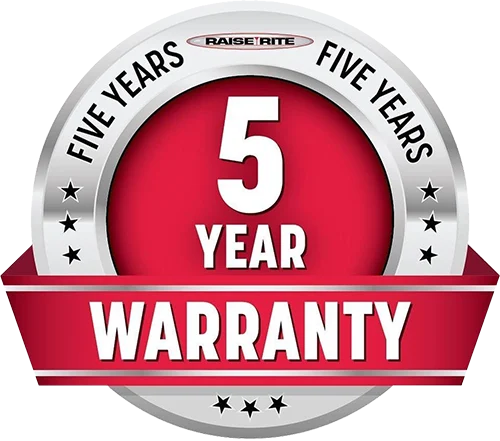
Our warranty gives you peace of mind that if your concrete settles again due to our foam or workmanship, we’ll come back and fix it. No games. No runaround. We’ve built our name by doing things the right way, and our warranty reflects that. It’s not just about fixing concrete — it’s about earning trust and keeping it.
Can I get a quote without someone coming to my house?
Yes — getting a quote is quick and easy, and you don’t always need an in-person visit. You can call us, fill out a contact form, or use our virtual estimate option by sending photos and basic info about your concrete issue.
Just snap a few clear pictures of the problem area and give us measurements if you can. Our team will review everything and send back a personalized quote — no pressure, no hidden fees. It’s a fast, simple way to get expert advice without waiting around for an appointment.
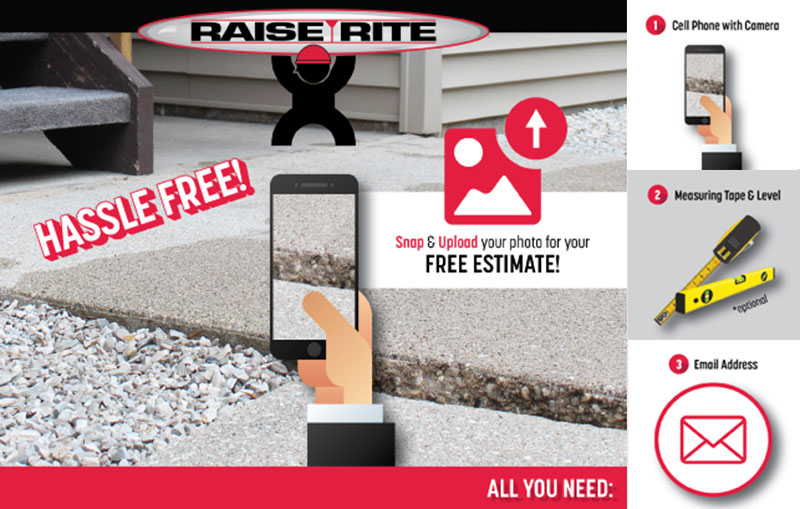
What is the quote process like?
Getting a quote is quick, easy, and personal. You won’t deal with a call center, a chatbot, or a phone tree — when you call us, real people answer. Our team is part of our family-owned business, and we treat you the same way we’d treat one of our own.
We offer both on-site estimates and virtual estimates, so you can choose what’s easiest for you. Want to skip the visit? Just send us a few clear photos and some basic info, and we’ll get back to you with a quote fast — no pressure, no upsells.
Our team prepares more than 3,000 estimates every year, and we’re proud to keep the process straightforward and hassle-free. Whether you call or use the contact form, we make the process simple, honest, and helpful from the start. That’s how we’ve done it for over 50 years — and we’re not changing now.
Process & Timing
How long does the concrete lifting process take?
 Most concrete lifting jobs take just a few hours. We drill small holes, inject foam, and raise the slab back into place. Once the lifting is done, the foam cures fast — usually within minutes — and the surface is ready to use immediately.
Most concrete lifting jobs take just a few hours. We drill small holes, inject foam, and raise the slab back into place. Once the lifting is done, the foam cures fast — usually within minutes — and the surface is ready to use immediately.
There’s no waiting for concrete to dry, no multiple-day disruption, and no heavy equipment tearing up your property. Whether it’s a driveway, sidewalk, patio, or garage floor, we can usually finish the job in one visit with minimal interruption to your day.
What will my concrete look like after it’s lifted?
Your concrete will look clean, level, and safe again — and that includes stamped and decorative concrete. We understand that customers worry about how it will look after drilling, but the holes we drill are small (about the size of a dime) and placed with care. After lifting, we fill each one with a cement-based patch and do our best to match the color to your slab.
Most people are surprised by how natural the final result looks. The patches blend in well, and there’s no cracking, no damage, and no sign of heavy equipment. You keep your original slab, avoid replacement, and get a smooth, solid surface that looks right again.
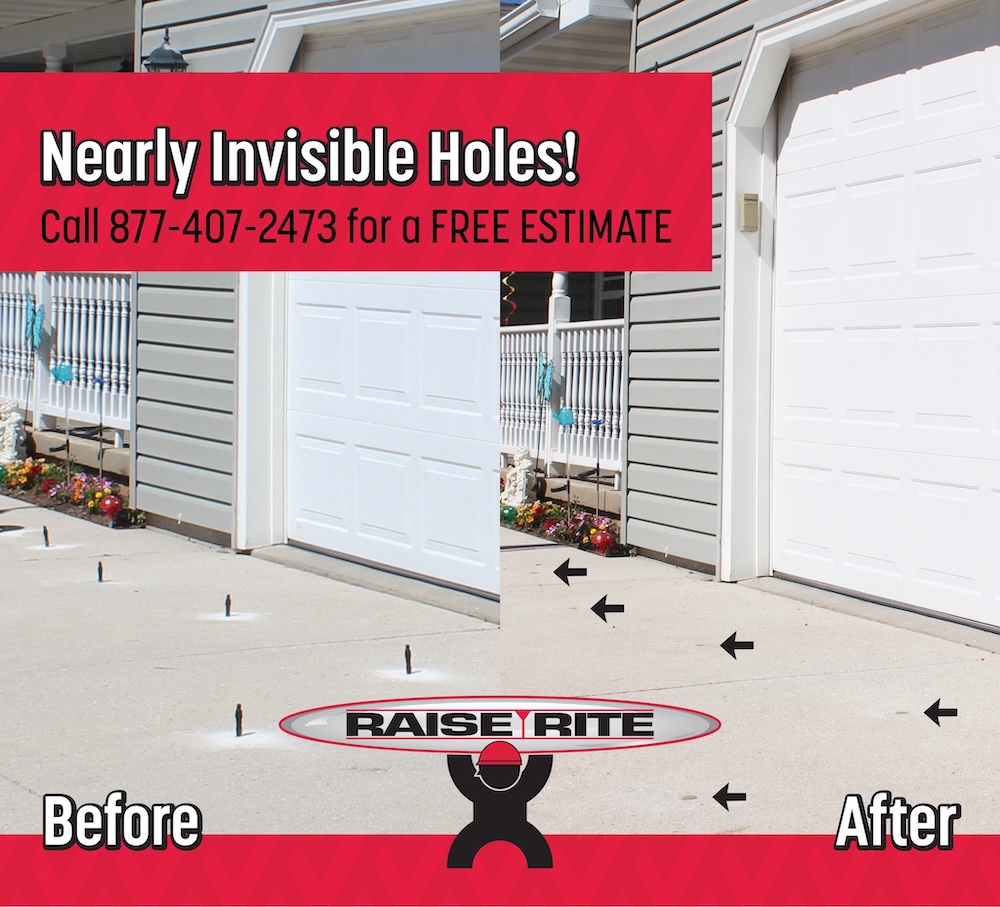
Is concrete lifting messy or disruptive?
No — concrete lifting is a clean, low-impact process. We do drill through the concrete, which creates a small amount of dust (which we clean it up fully before we leave). Our team also uses shields and protective covers to keep your home, garage, and landscaping safe during the work. We take extra care to protect your space — something many companies skip.
There’s no heavy machinery tearing up your yard, no loud demo, and no hauling away broken concrete. Most jobs are done in a few hours, and the area is left clean, level, and ready to use.
It’s also a more sustainable option. By lifting instead of replacing your concrete, we help reduce landfill waste. Our polyurethane foam contains 40% renewable content, making it an eco-friendly way to fix your concrete without starting from scratch.
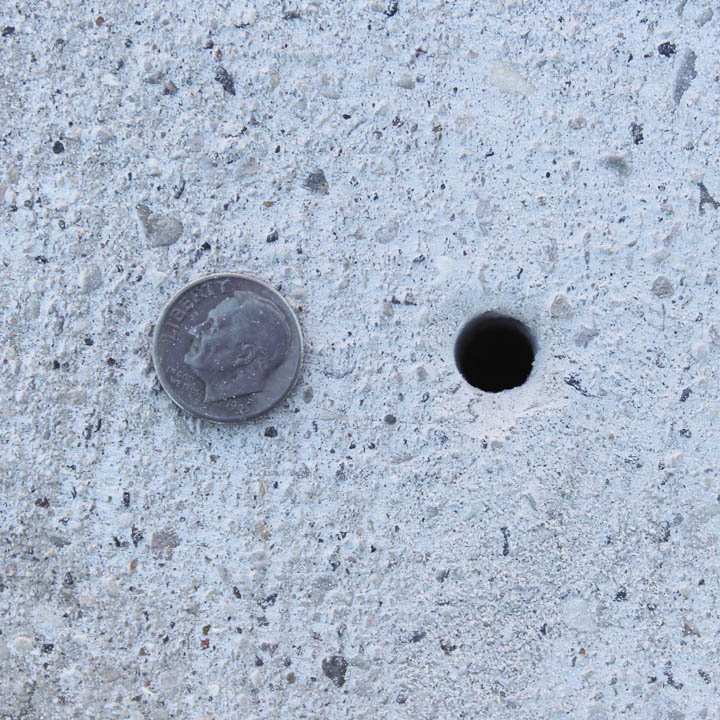
How do you fill the holes?
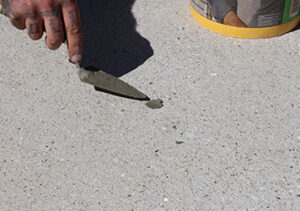
When concrete is raised with polyurethane foam (polyjacking), the foam fills the holes and acts as a shock absorber so the concrete doesn’t crack.
When the job is completed with mudjacking material, Raise-Rite inserts a foam plug into the hole to act as a shock absorber when slabs are affected by the frost cycle.
Holes that are not patched with foam can pop out when the material and earth under the slab expand from freezing. That’s why Raise-Right takes the extra step of ensuring that all holes are filled with foam plugs, providing additional support and preventing future damage.
Once the holes are filled, we patch over with cement seamlessly blending into your existing concrete. The concrete is then ready to be used immediately!
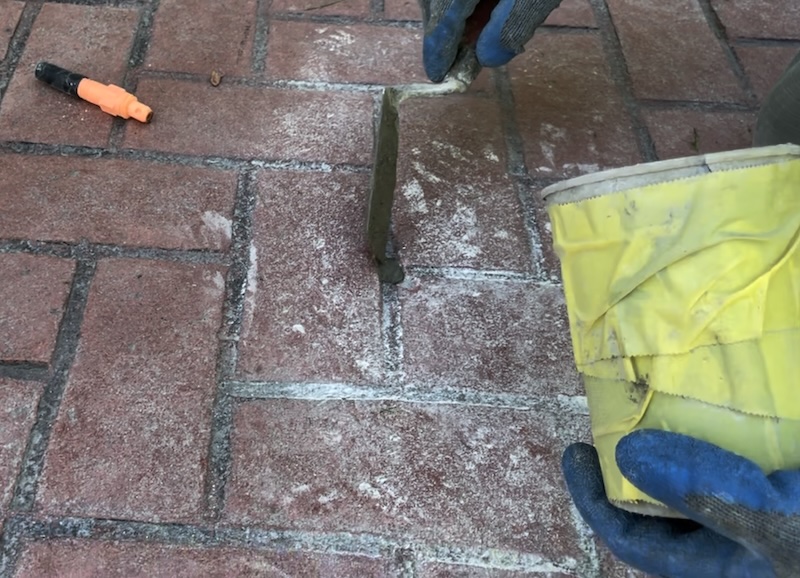
Will there be heavy trucks on my lawn?
Nope — our trucks stay parked on the street. For polyurethane foam lifting, we simply run a hose from the truck to the area that needs repair. No heavy machines driving on your driveway or grass, no lawn damage. The equipment we use is lightweight and built to reach just about anywhere without tearing up your yard. Clean, simple, and low impact.
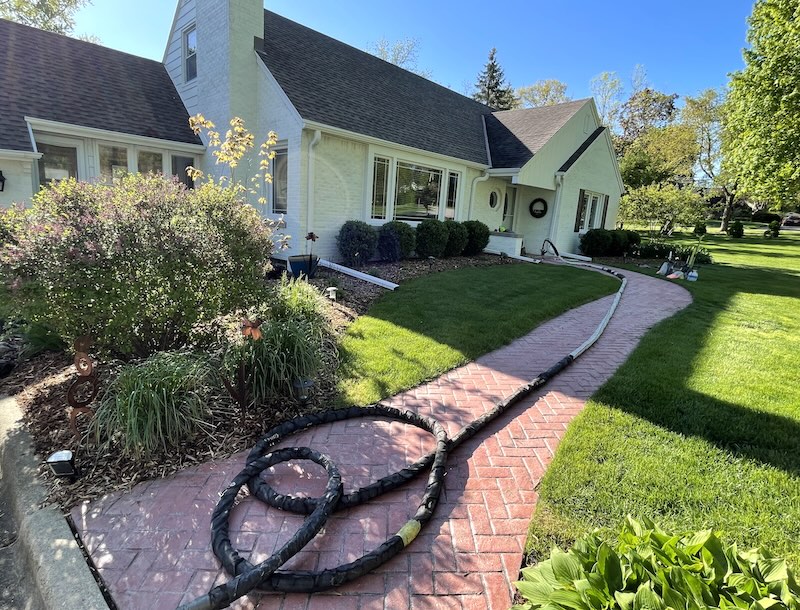
Is there any maintenance needed?
When our work is completed, you will need to caulk the seams of the sections that were repaired, or backfill against any exposed areas to contain the material and prevent future sinking.
Self-leveling cement caulk can be purchased easily at a home improvement store and works great for sealing joints. We recommend using a silicone based, self-leveling caulk. If a crack is very large, sand can be used first between the crack before applying the caulk on top.
Preventing water from going under the slab is key to preserving the repaired slab. You will also need to make sure that your downspouts are correctly placed to assure water runs away from your concrete slabs or foundation.
Taking these suggested steps for preserving your raised concrete is a condition of your Raise-Rite warranty.
The good news? We now offer concrete caulking, pressure washing, and concrete sealing services — so if you’d rather have us handle all this, we absolutely can. Our team can complete these protection steps during the same visit, saving you the hassle and helping your concrete last longer.
Let us know what you need — we’re here to help.
Trust, Safety & Differentiators
Is your foam safe for the environment?
Yes! Our foam is safe for your home, your family, and the environment. The polyurethane foam we use is made by our sister company, HMI, and contains over 40% recycled and renewable materials. It’s a USDA Certified Biobased Product, meaning it meets strict standards for sustainability and environmental responsibility.
It’s a USDA Certified Biobased Product, meaning it meets strict standards for sustainability and environmental responsibility.
HMI foam is formulated using renewable, non-toxic components that won’t leach into soil or groundwater. It’s clean, long–lasting, and designed to perform without adding weight to already weak soil. By lifting instead of replacing, you also keep unnecessary concrete waste out of landfills — which helps reduce your environmental impact.
Click here to learn more about the environmental impact and product safety.
We’re proud to offer a solution that’s fast, effective, and better for the planet — without compromising on quality or results.
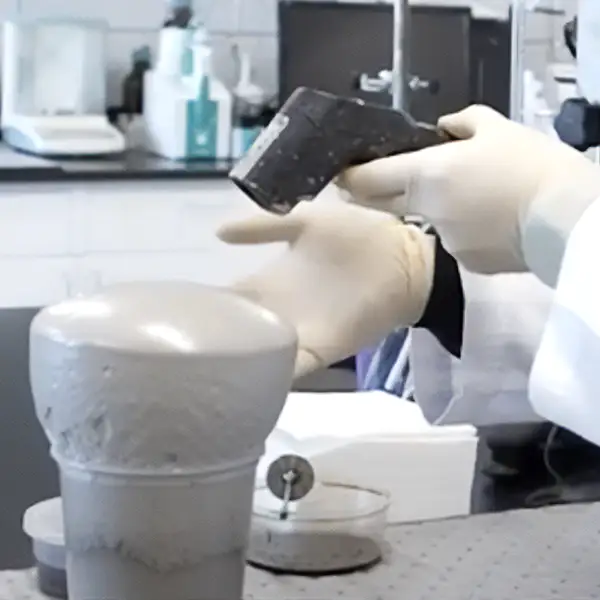
What makes Raise-Rite different from other concrete lifting companies?
We’ve completed over 100,000 concrete lifting projects, saved homeowners more than $20 million, and we’ve been doing it since 1974. Raise-Rite is a second-generation family business, and today, three generations still show up every day to help customers get real results. We know what works, and more importantly — we know what lasts.
Through our manufacturing company HMI, we manufacture the very same equipment used by contractors nationwide. We don’t just use the tools — we build them, we teach others how to use them, and we have our own training facility where we train the industry.
From warehouses and factories to airport hangars and stadium floors, we’ve handled it. But we still love helping families fix uneven driveways, sidewalks, patios, and garage floors. Saving people money, avoiding the hassle of replacement, and eliminating trip hazards — that’s what we do best.
Raise-Rite isn’t just another concrete lifting company. We’re the ones the pros call when they need help — and we’re proud to bring that same level of care to every home and every project.
Do you offer other services related to concrete repair?
Yes — we offer more than just lifting. In addition to concrete leveling, we also handle void filling, soil stabilization, seawall repair. For homeowners, we fix sunken driveways, sidewalks, patios, steps, garage floors, and pool decks. For commercial and municipal jobs, we lift warehouse floors, parking lots, interior slabs, and more.
We also offer a Deluxe Concrete Protection Package, which includes lifting, seam sealing & caulking, pressure washing, and concrete sealing for a complete solution that looks great and lasts longer.
If you’re not sure whether we can help, just ask or send a photo. We’ll take a look and let you know what your concrete needs — no guesswork, and no pressure.

Why does my concrete keep sinking, even after it’s been lifted or replaced?
Recurring concrete settling is often a sign that the problem goes deeper than the surface, literally. While standard concrete raising is great for many jobs, sometimes the issue lies in weak or eroded soils further below the slab. That’s where our advanced Deep Foamjection™ service comes in. This method injects expanding foam deep into the ground—up to 20 feet—to stabilize the soil, fill hidden voids, and stop future sinking at the root. It’s a long-term solution for driveways, sidewalks, foundations, warehouse floor, and more.
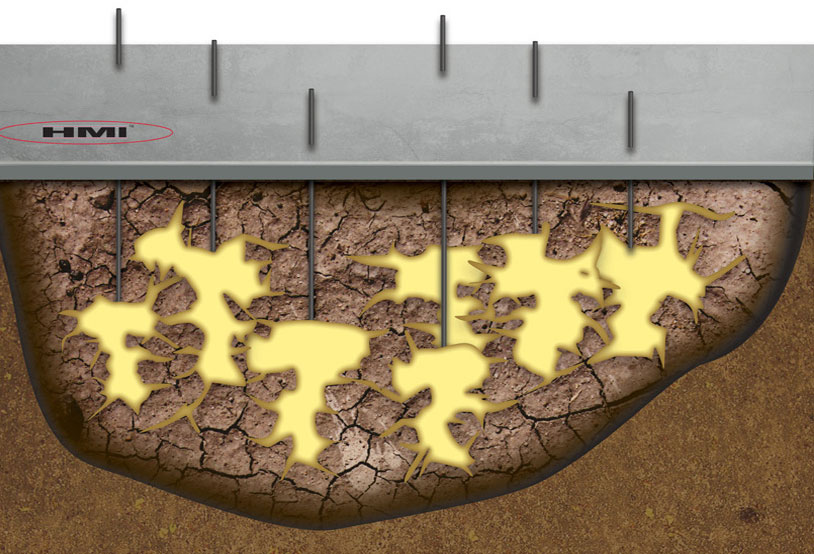
Cost Benefits of Concrete lifting vs. Concrete Replacement
Reduction in Labor & Service Costs
One of the main benefits of concrete raising compared to concrete replacement, is the reduction in cost you get to enjoy. To replace a concrete slab, you must hire a crew to demolish the slab, remove and discard it, stabilize the foundation below where it used to be, repour and let cure the new cement.
This is a lot of man power, hours, and materials, which ultimately equate to a much larger bill, and sometimes days to weeks worth of waiting.
Concrete raising is 50%-75% less than the cost of concrete replacement!
Benefit #2
Minimal Impact on Surroundings
Concrete raising has little to no impact on your environmental surroundings. Equipment is parked off site, and has the ability to reach even hard-to-reach places, meaning you don’t need to work around the crew, they work around you.
Benefit #3
Minimize Potential for Injury
Concrete raising projects generally last 2-3 hours (sometimes longer, depending on the severity of the issue) and are ready immediately upon completion. Downtime, cost, and potential for injury are minimized substantially when you choose to raise and repair, compared to replacement.
Why Choose Raise-Rite
Serving Illinois since 1974
Over 50 years of experience lifting and leveling concrete across Chicagoland and beyond.
100,000+ Jobs Completed
We’ve helped more families and businesses fix their concrete than anyone else in the state.
$20M+ Saved vs. Replacement
Our concrete lifting service has saved customers millions by avoiding tear-outs and full replacements.
5-Year Warranty
We stand behind every concrete leveling job with a real warranty — no fine print, just peace of mind.
Family-Owned & Operated
Three generations working together to deliver honest work and long-lasting results.
We Train the Industry
Contractors across the country come to us to learn — when you hire Raise-Rite, you get the team that sets the standard.
We Manufacture the Tools
We build the same polyurethane foam and equipment used by top pros across the industry.
Residential, Commercial & Municipal Work
From homes to highways, we handle projects of all sizes — safely and professionally.
Proudly Based in Carol Stream, IL
We’re a local team using American-made tools and doing the job right, every time.



